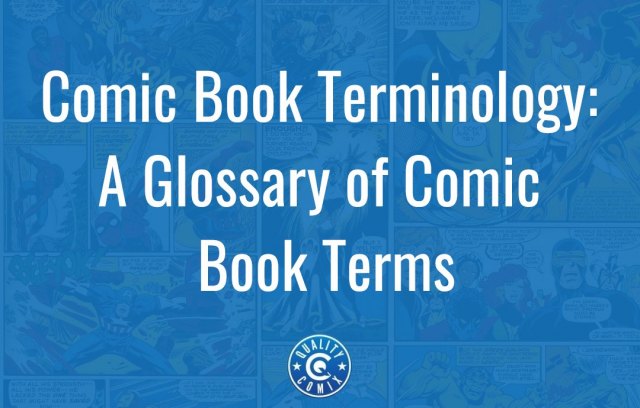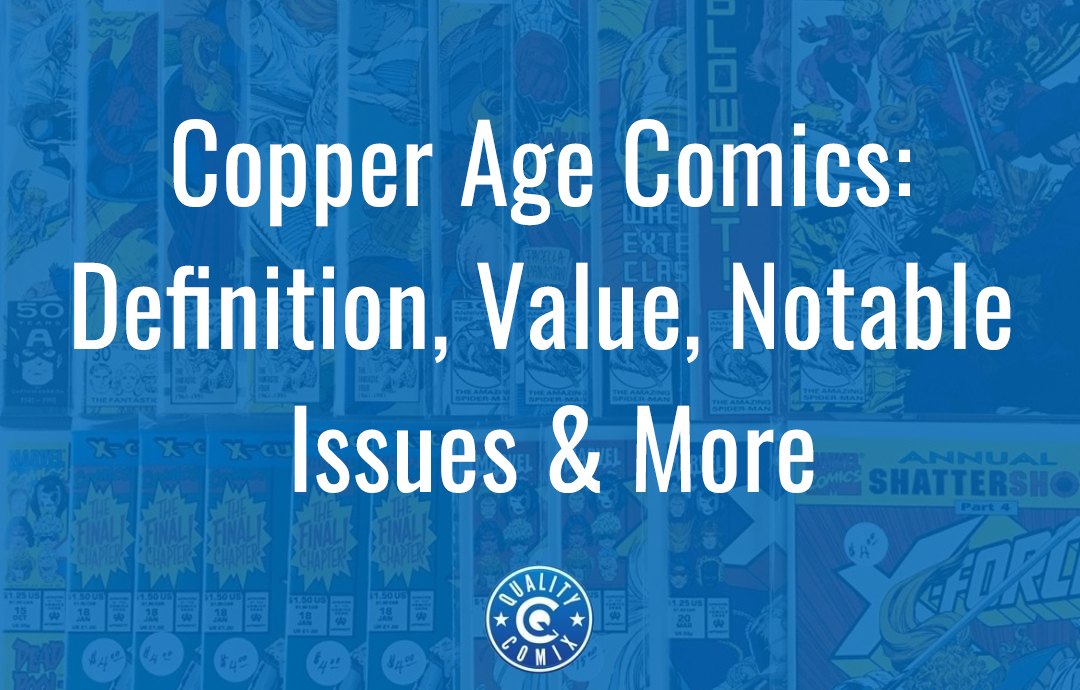
Most people will agree that the eras of comics started with the variations on sequential art produced before the "heyday" of American comics, and the generally accepted term for it is the Victorian age. Some also define an era after the Victorian age, but before the subsequent more well-defined ages, as the Platinum age. After that, what we all agree upon, is the Golden Age of comics, ranging from 1938 to 1947. The Atomic age comes after, from 1947 to 1958, followed by the Silver age, from 1958 to 1970.
From there, the ages get less defined. There's the Bronze age, from 1970 to 1985. There's the Copper age, from 1985 to 2000. Some simply call anything from 1985 onwards the Modern age. Others call the 1980s to 2000 the Dark age. Most call anything from 2000 to the present the Present or Modern age, though we're past due for a new name and a new age shift.
Table of Contents
The Copper Age
Today, though, let's talk about the Copper age. Stretching from May 1985 to August 2000, this age is defined by a series of shifts in the industry, from tone to purpose to style. Before we even dig in, though, it's worth mentioning that this era is poorly defined, and not everyone agrees on when it starts or ends. A common starting point is actually 1983, with the founding of Mirage Studios.
Just prior to this era, comic prices saw rapid inflation. Comics are now 65 cents a piece, a shockingly high price for people used to previous newsstand prices of 15 cents for their books. At the same time, though, newsstand sales have dropped almost entirely off the map. Instead, direct sales dominated the market.
While the major publishers were growing and dominating, indie publishers saw a rise and fall. The introduction of the Teenage Mutant Ninja Turtles was a huge hit, giving vitality to black-and-white comics, but that proved short-lived. The Turtles have been an enduring set of characters, but even though they were licensed for a blockbuster film, the comics they were based on fell out of favor.
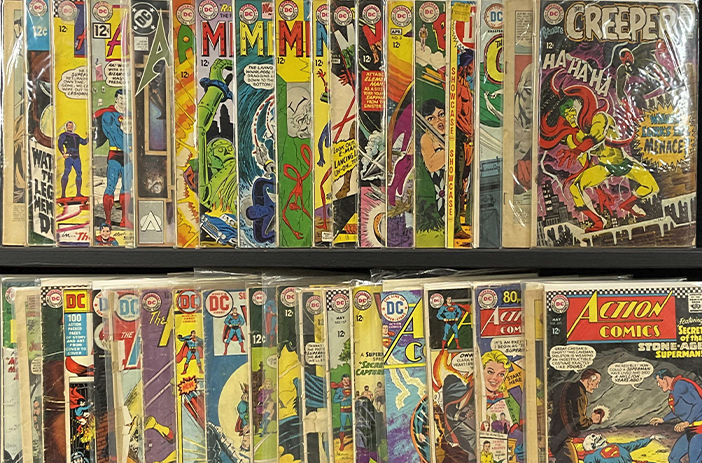
A major shift in the way the world communicated was growing around this time as well. The internet itself was changing from a slow, mostly-text medium done over tedious dial-up connections, limited to military and educational institutions, and centering around BBSs, into something more closely resembling what we see today.
Throughout all of this, the target demographics for comics changed. Prior to the 80s and 90s, comics were largely viewed as "for children," so even when they had occasionally darker subject matter, they always tended to focus on morality tales and a firm divide between heroes and villains. Now, though, a darker tone was taking over, and comics were more aimed at the adults who enjoyed them as children.
The name "Dark age" didn't come from a collapse of the industry; no, it came from a darker shift in tone. While not all comics pushed that direction (many still existed mostly to sell toys to children, after all), others definitely did. This was an era where you saw definitive comics hitting the stage by the likes of Alan Moore and Frank Miller. Books like The Dark Knight Returns and Watchmen pushed comics into darker territory, and adults bit the hook.
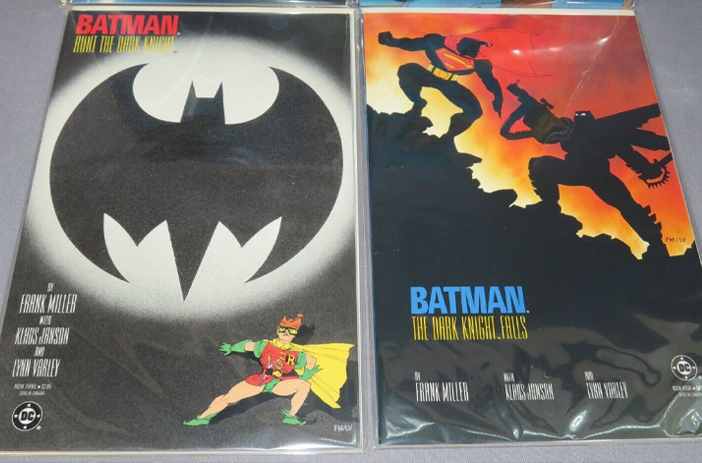
Indie comics also stopped being quite so much of an outsider industry. The big publishers started to view them less as competition and more as a source; when a creator or a character grew popular, they would license or buy it up and roll it into their major labels. This extended to other industries, most notably film, though it wasn't always faithful, as anyone who read The Mask and watched the titular movie can attest.
Throughout the industry, comic prices continued to rise, and by the end of the era, around Y2K, prices were up to nearly $2 an issue.
The Copper age saw a low of redefinition, redesign, and reintroduction of characters, often in a darker and grittier tone. Many definitive works of dark, adult-oriented comics debuted during this time. There was also a defined push towards "can't miss" issues, where it seemed like every storyline had some must-see event happening every month. Characters were killed off, cross-over events riddled the industry, and more.
Pandering to Collectors
In a sense, the Copper age is also the start of when publishers truly took notice of the collector's industry. Prior to this era, comics were often considered disposable. They were rags for children, torn apart in their reads, carelessly discarded, or even sent back to the publishers for a refund.
As the children who enjoyed comics in the 50s and 60s reached adulthood and financial solvency, nostalgia took hold, and they started looking back and finding just how rare those old comics were now. Retro comics fetched high (at the time) prices, and you can bet the publishers took notice.
Obviously, newer comics were much easier to come by and had much larger print runs. So, how could they market a new comic to collectors? Must-see events were part of it, but more importantly, variants were introduced. Publishers tried every gimmick they could think of, from pin-ups and centerfolds to chromed covers with embossing to multiple variant editions of every book. Collectors would need to speculate on which ones would hold value or simply buy them all to round out their collections. Publishers, after all, would certainly love to sell six copies of a given issue to everyone instead of just one.
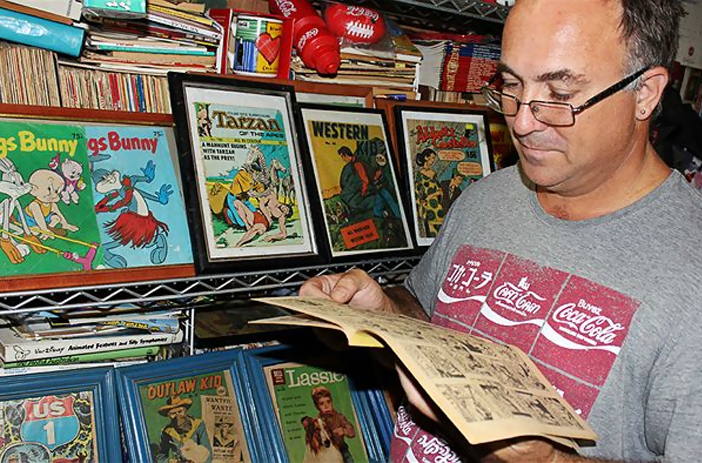
As with many such trends, saturation breeds stagnation, and it only really lasted half a dozen years before consumers got tired of the gimmicks and stopped buying them. The revelation that 99% of them never had any resale value certainly put the nail in that coffin.
By the year 2000, things in the industry had changed, and they would never be the same again. But then, you can say the same thing about every industry, can't you? Mass production, mass marketing, mass communication, and the race to the bottom were kicking into full swing… but that's a story for another time, dear readers.
While the name "dark age" stems from the grittier tone of the comics published throughout the era, the "copper age" name is almost a better fit. Previous eras had names like Platinum, Gold, and Silver; precious metals reflecting the more precious contents of the time and the value thereof. Copper, while still technically a precious metal, has always been more of a workman's metal, used in construction and not decoration. So, too, did the industry shift from telling stories to making profits.
Valuable Keys from the Copper Age
As we discussed in our post about how much age affects the value of comics, the older a book is, the more likely it is to have value. Moreover, books from the Golden Age hold the most value by far, and every subsequent age has less and less inherent value.
The biggest factors for these drops in price are simply a matter of attitude and scale. On the one hand, you had people who recognized the value in older comics, bemoaned the missed chance from the comics they had as a kid and carelessly destroyed, and want something better for their own future or for the future of their children. They would buy comics and store them, hoping they would one day be collectors' items. Of course, this increases supply and decreases demand; where a single Golden Age comic might have had a print run in the thousands with only a few hundred remaining (or less!), Copper age comics had print runs in the hundreds of thousands, if not more, and far more remaining in great condition.
At the same time, of course, publishers trying to capitalize on this printed so many more variations and collectible versions that it depressed the whole industry. Many of the true collectibles from the era aren't comics at all – they're things like the original Beanie Babies from 1993 or the original Magic the Gathering cards from the same stretch.
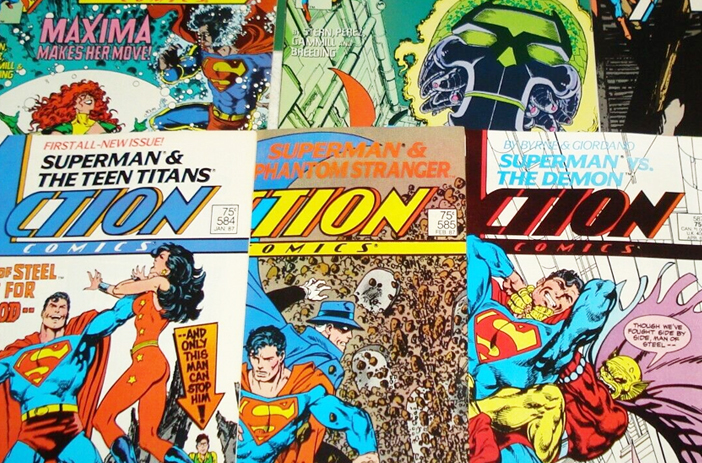
We go into more detail in posts like The Most Valuable Comics from the 1980s, but the key issues from the Copper Age tend to revolve around darker heroes and antiheroes. Characters like Venom (or just the Black Spiderman suit) are well-represented, Wolverine has a place, darker Batman storylines like the definitive Killing Joke are still iconic today, and of course, some character introductions like TMNT and Usagi Yojimbo are still always popular. The list includes:
- Teenage Mutant Ninja Turtles #1, the introduction of the turtles, and one of the major upswings of Mirage comics.
- Marvel Super Heroes Secret Wars #8, the first appearance of a black Spiderman suit, and the first encounter between Spiderman and what would eventually be Venom.
- Albedo Anthropomorphics #2, the introduction of Usagi Yojimbo, the rabbit samurai cult classic character still popular today.
- Wolverine #1, a first issue of a new comic line, though this one is a bit of an outlier in the collector's world for only selling as valuable because it was a 10/10 grade.
- Amazing Spider-Man #300, the introduction of Eddie Brock's Venom, the version of the character now broadly considered definitive.
- Bone #1, another indie darling many people love. It has a limited collector's audience, though, because of many collected reprints making it more accessible to anyone who simply wants to read.
- New Mutants #98, which is largely not a noteworthy book at all, except that it's the key issue introduction of Deadpool. The character is fairly different from his current irreverent, fourth-wall-breaking self, but it's still a key.
- Batman the Killing Joke, one of the definitive Batman stories from the era and a classic many people today still love.
- Gobbledygook #1, an indie comic that is valuable mostly because there are very, very few of them still in existence.
- Daredevil #181, which is slightly before the generally-defined start of the Copper age, but suits the trend of darker stories by including the death of Elektra.
- Vampirella #113, the final issue of the run, valuable not because of anything happening in it but because most returned copies were destroyed, so it's quite rare to find one.
One thing you might notice is that many of these comics are from the 80s. What about the 90s? Well, there are plenty of somewhat valuable 90s comics, but the 80s comics are generally worth more, again, due to age. Consequently, many of the more valuable comics from the 90s are rarities, imports, or issues that had low print runs due to printing issues.
- 2099 Manifest Destiny, the first appearance of Moon Knight, which is picking up steam as the character gets more love.
- Adventures of Superman #500 Platinum Variant, a variant cover that was much harder to come by.
- Akira #37 and #38, the two final issues of the hit Manga, plagued with printing delays and low print runs.
- Alf #48, solely because of the controversial cover design.
- Alita Battle Angel #1, the first US printing of the popular Japanese book.
- Amazing Spider-Man #361, the first appearance of Carnage. There are two prints of this, one with a gray cover and one with a white cover, with the white version pulling more value.
Stay tuned for more when we inevitably produce a Most Valuable Comics of the 90s post to dig deeper.
Want to Sell Valuable Copper Age Comics?
First of all, decide if you truly want to sell now. Copper age comics are starting to rise in value as their storylines are mined for popular movies and TV shows, and they'll probably continue to rise for the more popular characters and plots.
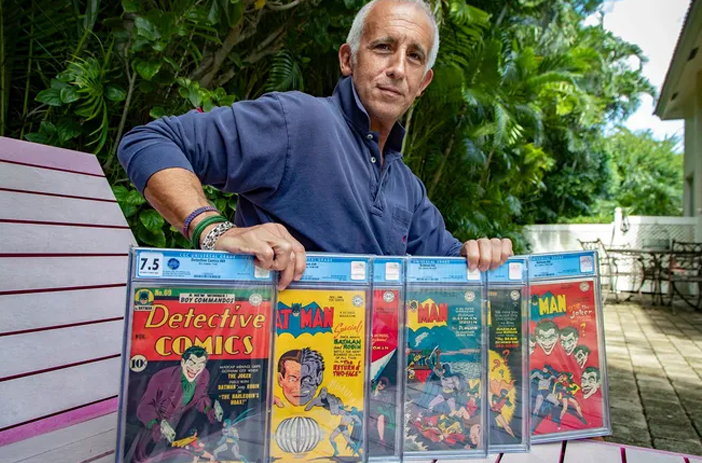
If you want to sell now, though – and we're behind you if you do! – feel free to reach out. We love to chat comics, discuss value, appraise collections, and help you sell your books. All you need to do is drop us a line. We can't wait to hear from you!


